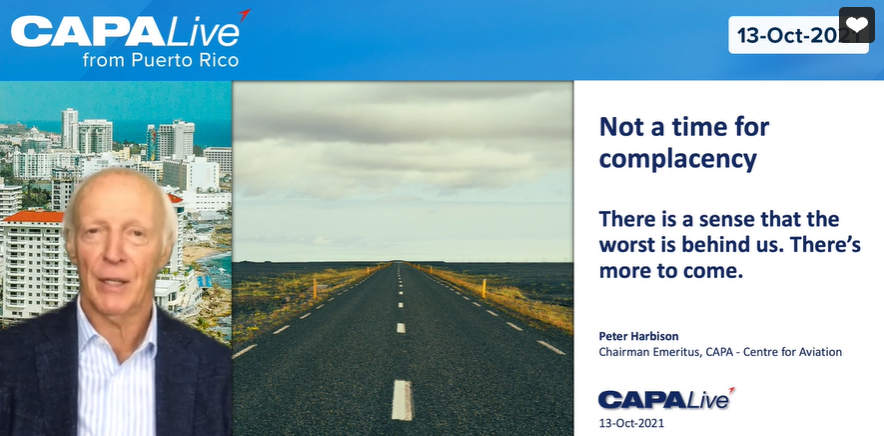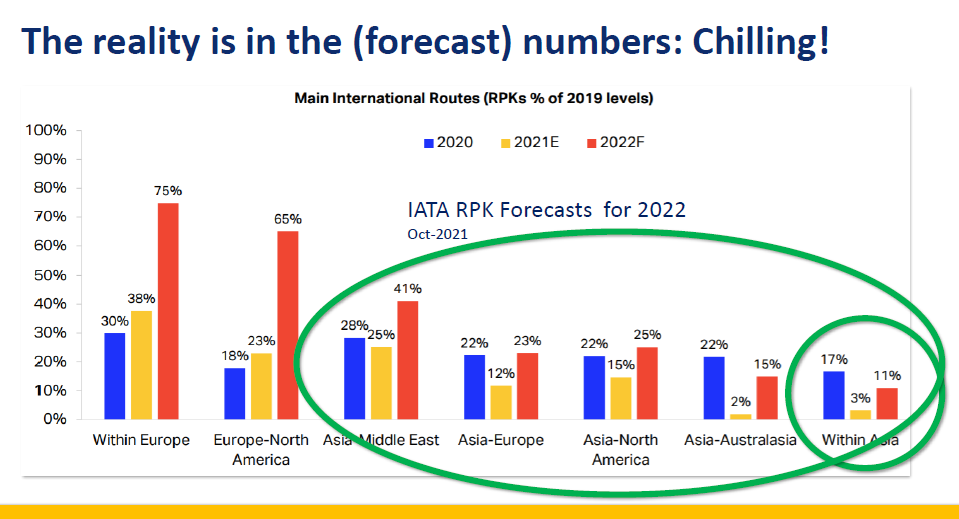You may ask what water currents and swimming has to do with the recovery of air travel in light of the ongoing COVID-19 pandemic? Well, this is seen as a perfect analogy for the airline industry right now. And, just like in a rip tide, following normal procedures is not an option, you have to act differently by swimming to the side of the current rather than against it to escape its powerful flow.
Rip currents can reach speeds as high as eight feet per second - faster than an Olympic swimmer and as such can sweep even the strongest swimmer out to sea. The COVID-19 health pandemic has similarly impacted airlines across the world, and while many have quickly adapted to stay afloat, some will inevitably lack the endurance to survive.
But, as Peter Harbison, founder and chairman emeritus of CAPA - Centre for Aviation, highlighted in his regular chairman's update industry observation during the Oct-2021 edition of CAPA Live, the rip tide analogy goes much, much deeper for airlines. "This isn't a time to revert to the old instance in the aviation industry. What we need is some different direction. We need to be thinking outside the box," he said.

The instinct in a rip is to swim back to shore just like you always have to safety. "That is a very normal human instinct," Mr Harbison explained, but in a rip the flow is too fast and "instead of swimming against it as you have always done, you have to take a different direction".
And while there is an increasing belief that "there's a sense that the worst is behind us," he warned that "there's more to come" and that now is "not a time for complacency". He added: "seeking hard for the new normal, or a new normal, is really perhaps not where we need to be. We need to be thinking much more laterally and recognising that we are not going to go back to an industry that is as we knew it."
The reality for the industry is clear in forecasts such as those presented just recently by airline body International Air Transport Association (IATA) at its Boston AGM, which Mr Harbison described as "chilling". The forecasts from the IATA Economics division for 2022 are "quite startling," according to the CAPA founder, which paints a "low recovery forecast" on an average global level.
This is most evident within Asia, a region of the world where air travel has been - and continues to be - significantly impacted by the COVID-19 pandemic and especially the government travel restrictions that have been imposed to control infection spread.
As the slide below from Mr Harbison's presentation, copied from IATA's own report illustrates, within Asia, projected to be one of the strongest growth markets through the 2020s, traffic levels in 2020 (measured in revenue passenger kilometres) were just 19% of pre-pandemic (2019) heights and are estimated at just 3% in 2021. Even in 2022, IATA projections put them at just 11% of 2019 levels.

"That is why I am talking about the need to look at things differently," said Mr Harbison. "This is a totally changed environment because we have been through two tough years and we are now looking - if these forecasts are anywhere near accurate - another year of incredible difficult times,"
While the slow recovery in Asia is the standout in the graphic, other key markets will also still see traffic levels down by more than half in 2022, according to IATA estimates. These include important routes between Asia and Australasia (down -85%), Asia and Europe (down (-77%), Asia and North America (down -75%) and Asia and the Middle East (down -59%).
These low numbers will "all have a massive impact" on where we are looking at in terms of future airline revenues, traffic and tourism. "it is potentially quite devastating," concluded Mr Harbison.